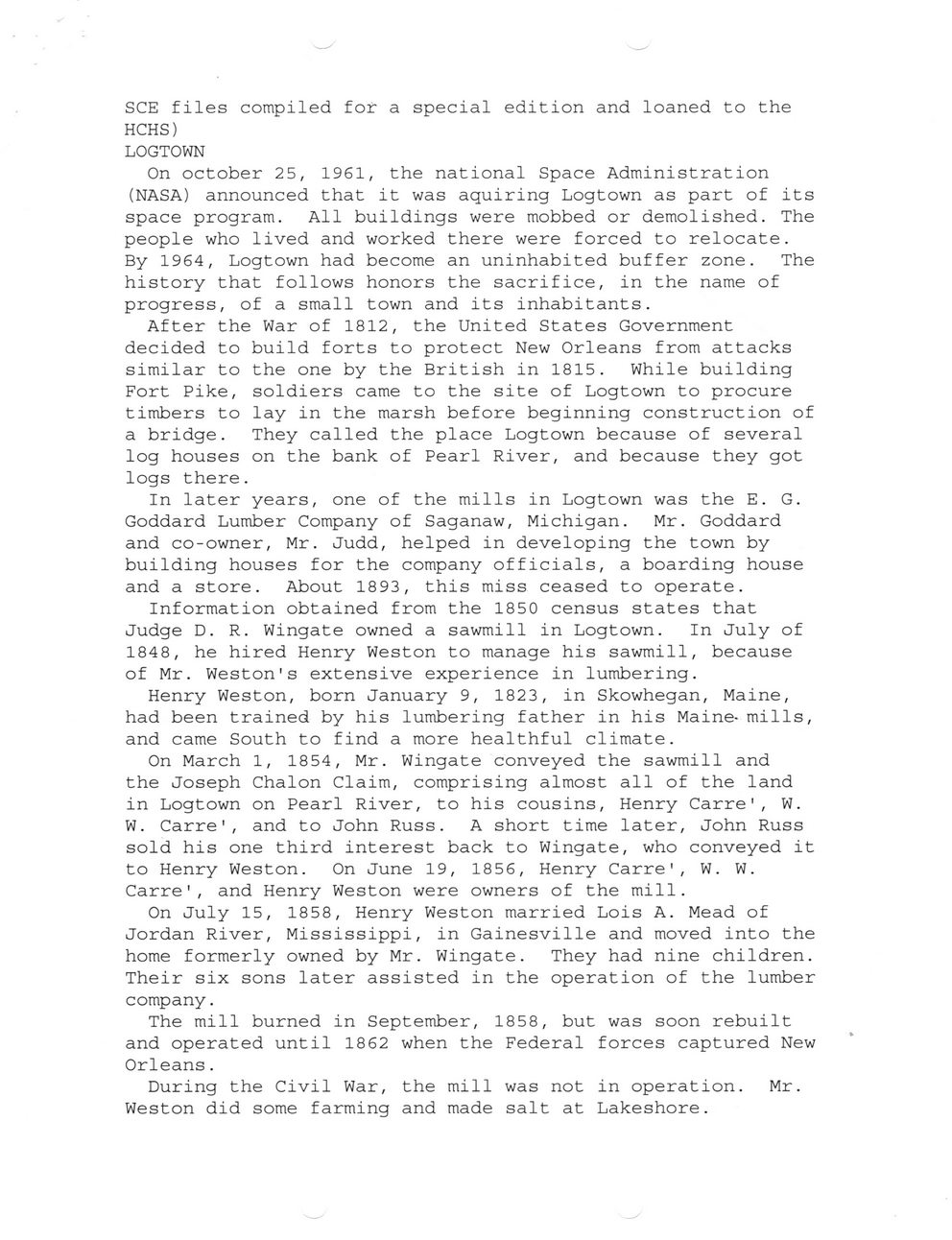This text was obtained via automated optical character recognition.
It has not been edited and may therefore contain several errors.
SCE files compiled for a special edition and loaned to the HCHS) LOGTOWN On october 25, 1961, the national Space Administration (NASA) announced that it was aquiring Logtown as part of its space program. All buildings were mobbed or demolished. The people who lived and worked there were forced to relocate. By 1964, Logtown had become an uninhabited buffer zone. The history that follows honors the sacrifice, in the name of progress, of a small town and its inhabitants. After the War of 1812, the United States Government decided to build forts to protect New Orleans from attacks similar to the one by the British in 1815. While building Fort Pike, soldiers came to the site of Logtown to procure timbers to lay in the marsh before beginning construction of a bridge. They called the place Logtown because of several log houses on the bank of Pearl River, and because they got logs there. In later years, one of the mills in Logtown was the E. G. Goddard Lumber Company of Saganaw, Michigan. Mr. Goddard and co-owner, Mr. Judd, helped in developing the town by building houses for the company officials, a boarding house and a store. About 1893, this miss ceased to operate. Information obtained from the 1850 census states that Judge D. R. Wingate owned a sawmill in Logtown. In July of 1848, he hired Henry Weston to manage his sawmill, because of Mr. Weston's extensive experience in lumbering. Henry Weston, born January 9, 1823, in Skowhegan, Maine, had been trained by his lumbering father in his Maine- mills, and came South to find a more healthful climate. On March 1, 1854, Mr. Wingate conveyed the sawmill and the Joseph Chalon Claim, comprising almost all of the land in Logtown on Pearl River, to his cousins, Henry Carre', W. W. Carre', and to John Russ. A short time later, John Russ sold his one third interest back to Wingate, who conveyed it to Henry Weston. On June 19, 1856, Henry Carre', W. W. Carre', and Henry Weston were owners of the mill. On July 15, 1858, Henry Weston married Lois A. Mead of Jordan River, Mississippi, in Gainesville and moved into the home formerly owned by Mr. Wingate. They had nine children. Their six sons later assisted in the operation of the lumber company. The mill burned in September, 1858, but was soon rebuilt and operated until 1862 when the Federal forces captured New Orleans. During the Civil War, the mill was not in operation. Mr. Weston did some farming and made salt at Lakeshore.

Logtown Logtown Revisited (05)